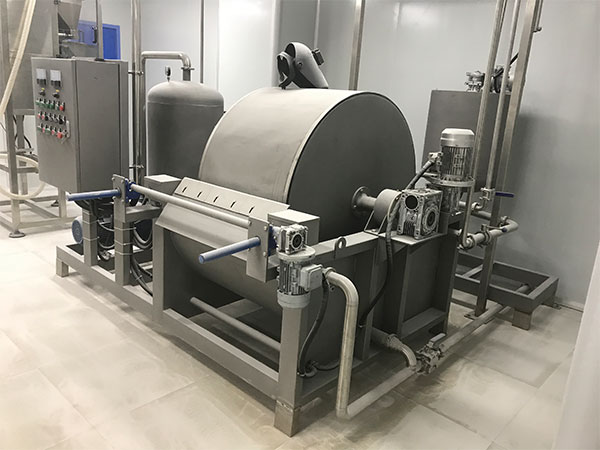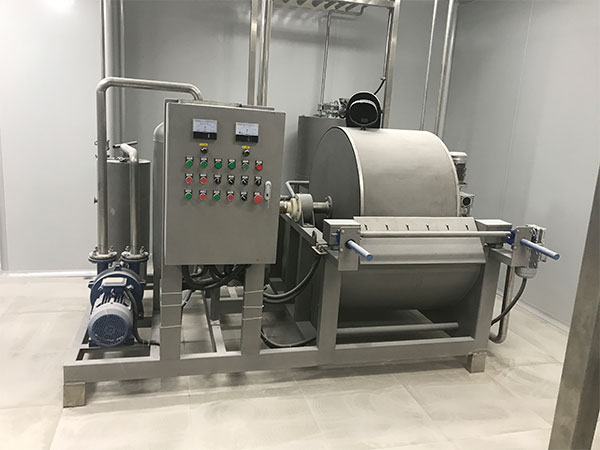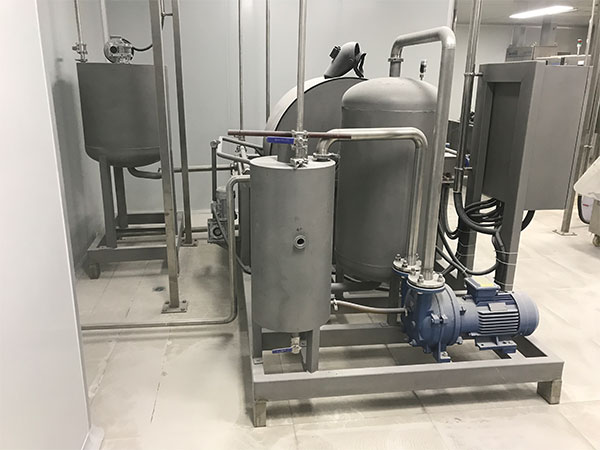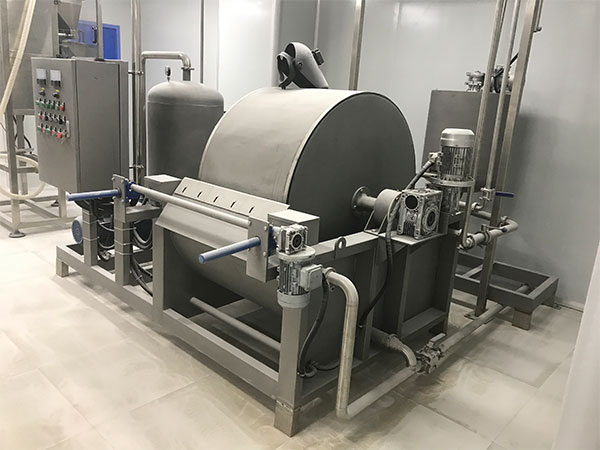Small Rotary Drum Filter Product Description
The small rotary drum filter is a continuous solid-liquid separation device. Its operating principle is based on the filtration driving force generated by negative pressure axis vacuum, relying on the filter cloth covering the drum surface to achieve efficient solid-liquid separation. The equipment primarily consists of core components such as the drum body, filter cloth layer, distribution valve assembly, unloading scraper, and vacuum system. The filter cloth wrapped around the outer circumference of the drum forms a continuous filter cloth layer. The distribution valve precisely controls the cyclic switching between filtration zones, while the scraper is responsible for filter cake removal.
During operation, the solid-liquid slurry adheres to the drum surface under vacuum pressure. The liquid phase and fine particles are sucked out, while larger particles gradually settle to form a filter cake layer. When the drum rotates to the discharge zone, the scraper contacts the filter cloth surface to completely remove the accumulated filter cake, completing a full filtration cycle.

Core Advantages
Efficient Filtration
Vacuum-driven technology enables rapid solid-liquid separation, with high continuous processing capacity. Variable-frequency drums adapt to different flow requirements, significantly enhancing production capacity.
Precise Separation
Dynamic filter cloth layers intercept solid particles, ensuring high filtrate transparency. Large particles form a uniform filter cake layer for centralized collection, meeting high-purity filtrate requirements.
Intelligent Control
The touchscreen panel supports dual-parameter adjustment of speed and vacuum pressure, with real-time monitoring of pressure, material level, and other indicators. Self-diagnostic functions reduce manual intervention, ensuring user-friendly operation.
Wide-Range Compatibility
By adjusting filter cloth pore size and vacuum pressure, the system can process fiber-containing paper mill wastewater, high-viscosity starch slurry, and micron-sized particle suspensions, covering industries such as chemicals and food processing.
Green and Energy-Efficient
Vacuum-driven systems replace hydraulic systems, reducing energy consumption by 40%. Steam condensate is recycled, and a sealed design controls waste emissions, meeting clean production standards.
Equipment Structure
The drum is covered with filter cloth to form a filter mat, a distribution valve controls circulation, and a scraper discharges the material.
Reasons for choosing the Yinuo small rotary drum filter:
1. High-quality materials: All parts of the equipment that come into contact with materials are made of 304 stainless steel, which has excellent corrosion resistance and can stably process corrosive materials such as acids and alkalis, thereby extending the service life of the equipment.
2. Intelligent Unloading System: The scraper mechanism is equipped with variable frequency control technology, enabling automatic and precise feeding and unloading without manual intervention, significantly reducing operational intensity and enhancing automation levels.
3. Flexible Speed Adjustment Design: The transmission system adopts a two-stage gear reduction structure, combined with AC variable frequency control for stepless speed adjustment. It can quickly adjust the speed according to the characteristics of the material, optimizing filtration efficiency.
4. Stable and Efficient Operation: The equipment supports 24/7 continuous operation, featuring low vibration, low noise, and a compact structural design suitable for various installation scenarios. Modular components facilitate daily maintenance, and critical components undergo special treatment to ensure reliable long-term operation.
5. Strong industrial adaptability: From starch slurry in the video industry to corrosive suspensions in the chemical industry, the equipment can meet the needs of complex operating conditions across multiple industries by changing the filter cloth pore size, adjusting the vacuum level, and adjusting the speed, achieving multi-functional use with a single machine.
Application Areas
Chemical Industry
It can efficiently handle processes such as calcium silicate production, achieving precise filtration of ultra-fine slurry as small as 5 microns and powders finer than 400 mesh. Its corrosion-resistant structure is suitable for handling acidic, alkaline, and saline materials, meeting the dual standards of separation precision and material compatibility required in chemical production.
Pharmaceutical Industry
For pharmaceutical processes such as drug residue dewatering, the equipment can achieve high-hygiene solid-liquid separation through a combination of an adjustable vacuum tube system and sterile filter cloth. The dynamic filtration layer effectively intercepts micro-particles, ensuring that the filtrate purity meets the requirements of pharmaceutical production quality management standards.
Food Industry
In food processing such as juice clarification and starch sugar production, the equipment achieves efficient separation of impurities through a multi-stage filtration design. The drum compartment structure combined with variable frequency speed control can adapt to the processing requirements of materials with different viscosities, ensuring the light transmittance of the filtrate and the retention of product flavor.
Environmental Protection Treatment
In the wastewater pretreatment section of the potato sludge reduction treatment machine, suspended solids can be effectively removed. The sealed design reduces odor dispersion, and in conjunction with the condensate recovery system, it achieves water resource recycling and meets environmental protection emission standards.

FAQ
01.What should I do if the filter cloth becomes clogged?
02.How to address insufficient vacuum pressure?
03.What causes excessive noise during equipment operation?
Noise sources may originate from three aspects:
1. The equipment is not installed level; it is recommended to calibrate the base.
2. Wear or loosening of transmission components; regular inspections and tightening are required.
3. Uneven material feeding can cause drum imbalance; maintain a constant feeding rate during operation.
Hot Tags:











